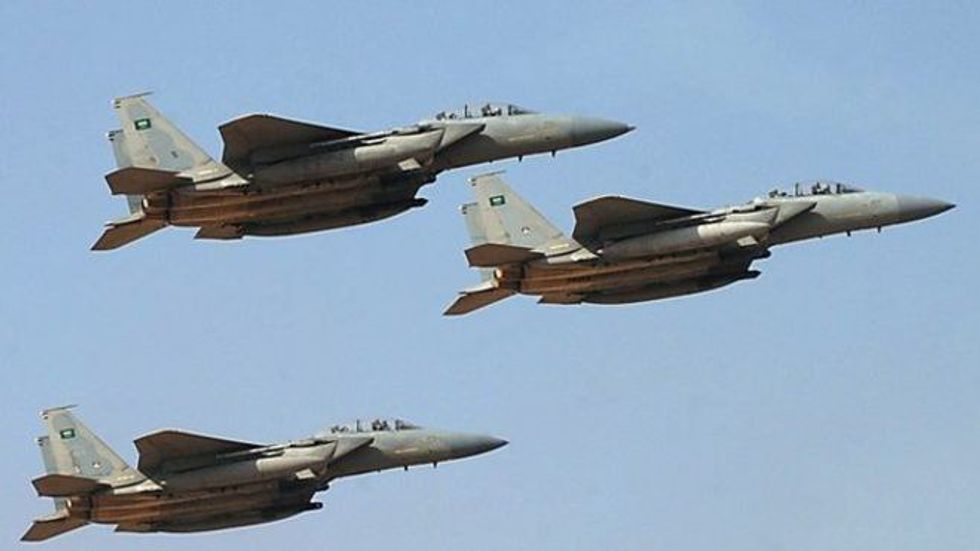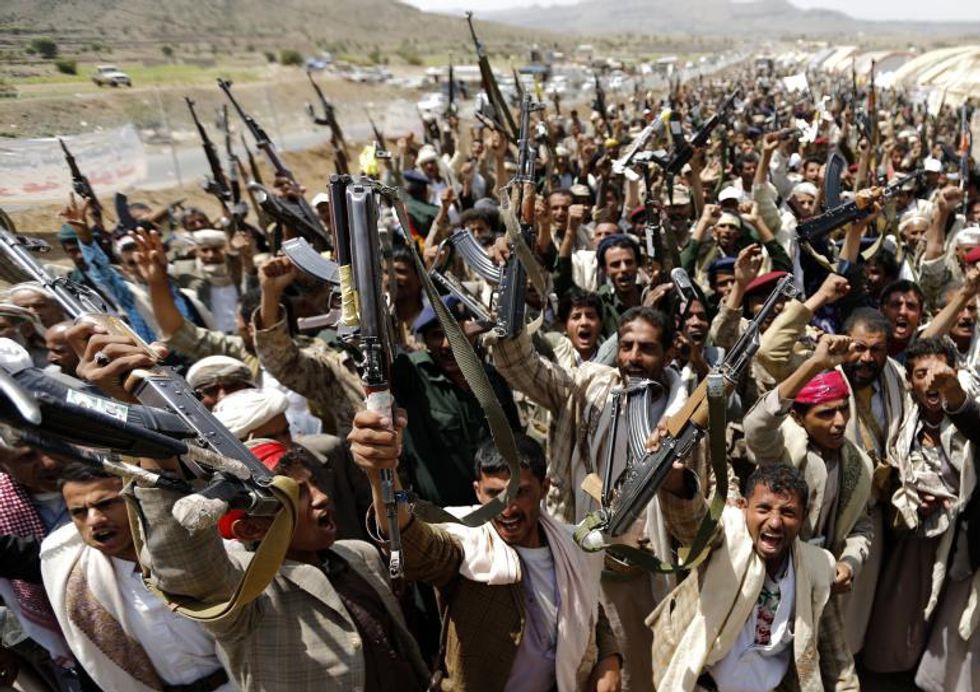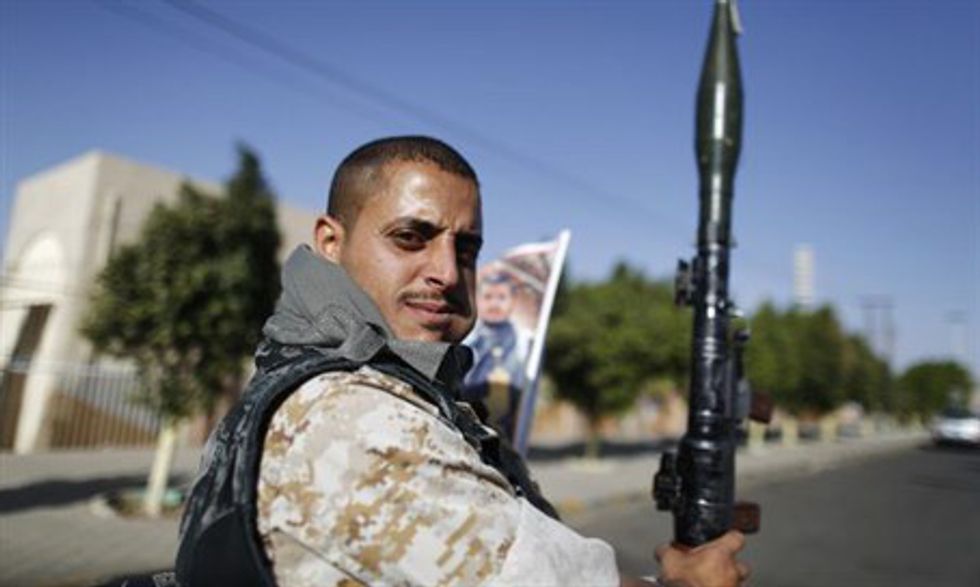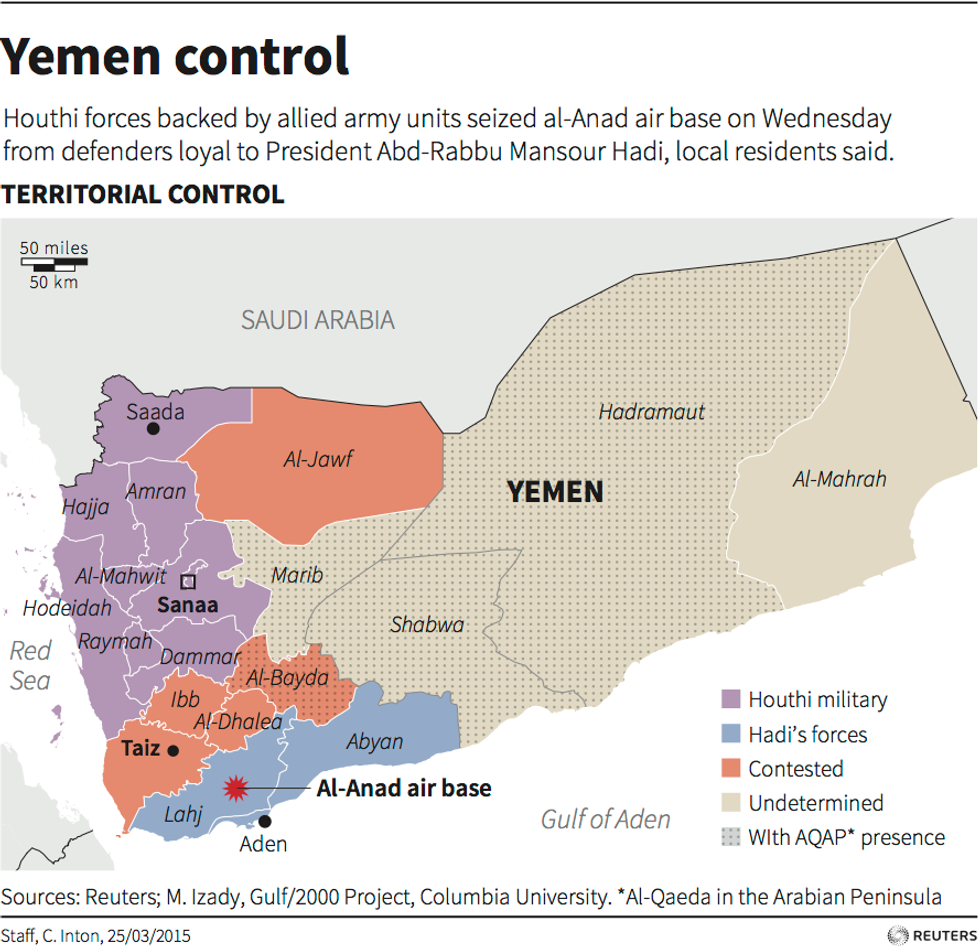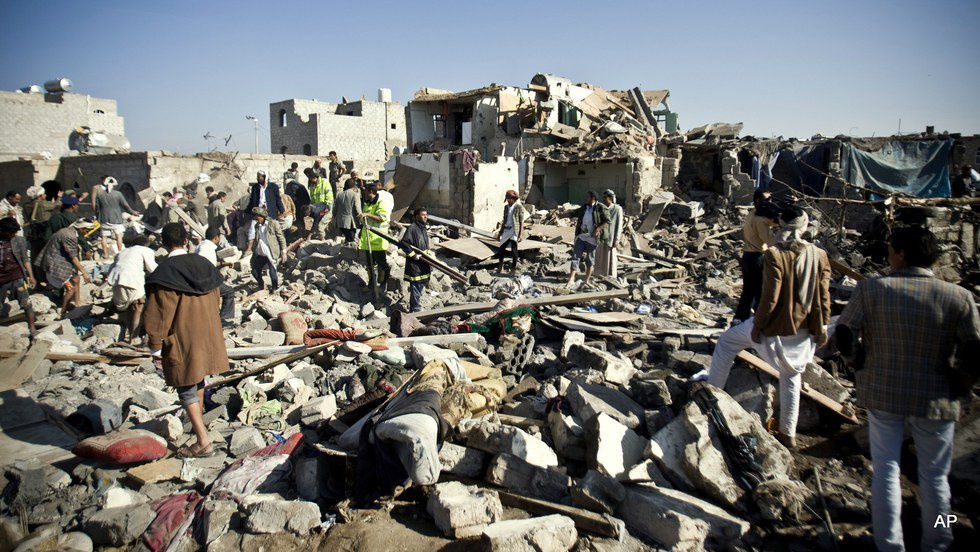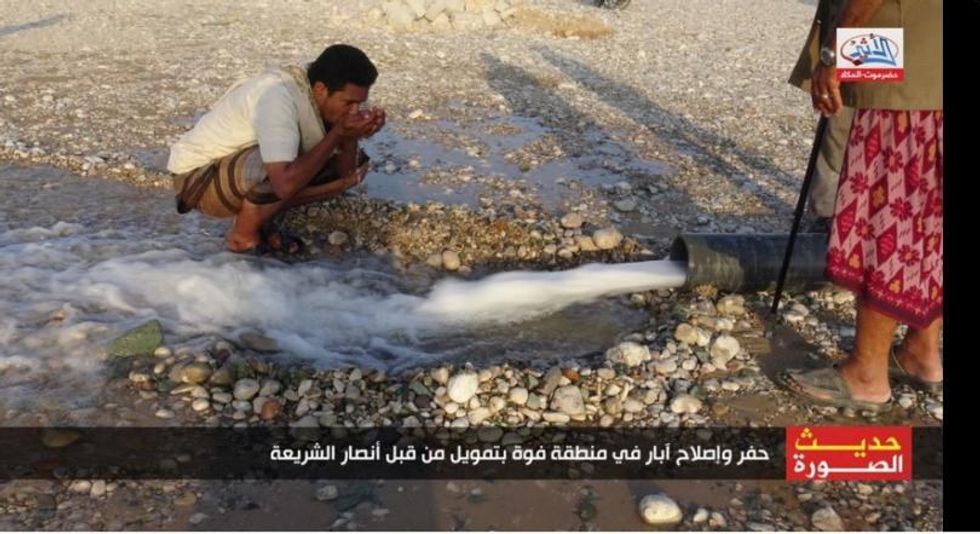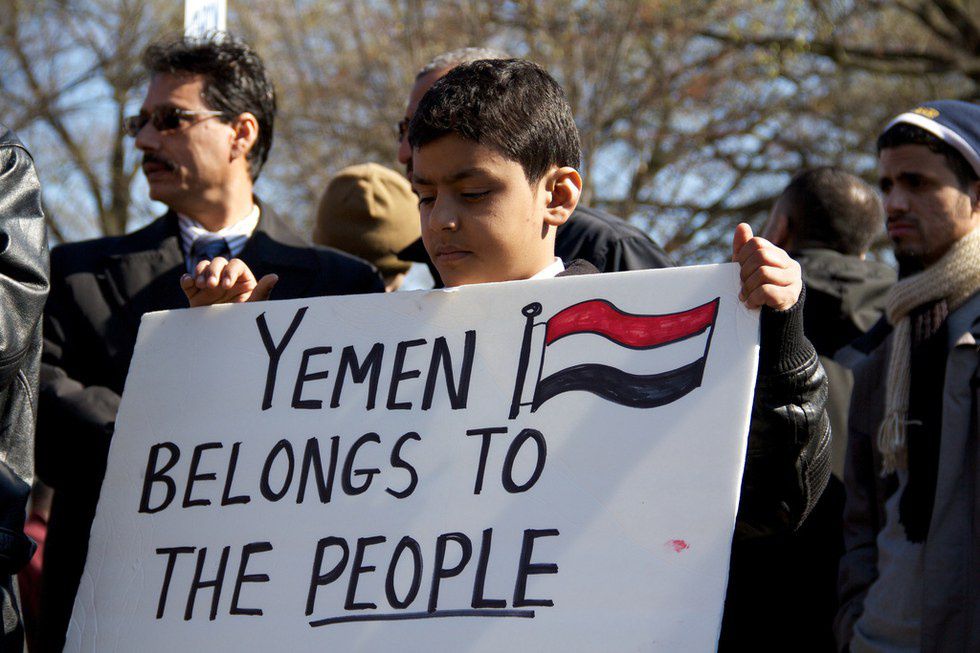This is Yemen.
Yemen is a small, Middle Eastern country with a population of around 27.7 million people, a GDP just under 36 billion USD, and an unemployment rate of about 27%.
This is Saudi Arabia.
Saudi Arabia is a large Middle Eastern country that also has a population of around 27 million people, but boasts a GDP of 748.4 billion USD and an unemployment rate of 11%. Saudi Arabia is also widely considered to be the US’s biggest ally in the Middle East, and routinely relies on the intelligence and weapons provided to them by the United States when carrying out military operations. Recently, the Saudis have been turning the bombs they acquired from the United States on the people of Yemen, and I wanted to understand why. So, let’s dive into the crazy world of politics in the Middle East, and try to figure out why weapons manufactured by the US government are killing innocent civilians.
The first thing I should explain is that the Saudis are not trying to kill civilians. Instead, they are trying to eliminate the Houthi rebel force, a Shiite militia which has taken over a significant portion of Yemen, including parts of the capital city of Sanaa. The Houthis have essentially been at war with the Yemeni government since September of 2014 and are supported by Ali Abdullah Saleh, the former President of Yemen who resigned in 2012 after months of protests inspired by the Arab Spring. The Saudis have been able to force the Houthis back some, but the internationally-recognized Yemeni government is really no closer to controlling Yemen than it was when the Saudi intervention began.
The resiliency and resources displayed by the Houthi forces has been impressive to say the least, and begs the question of exactly how a tribal militia from one of the poorest countries on Earth has managed to finance a civil war. The Saudis point to Iran, arguing that the Iranian government is bankrolling the Houthi forces in Yemen in an attempt to gain a foothold in the region. They would also disrupt the Saudi Arabian (and by extension, the US’s) operations and acquire the significant amount of natural resources (mainly oil) that Yemen possesses. The Saudis are not alone in making this claim either. Several United Arab Emirates (UAE) countries, Egypt and even al-Qaeda have all made similar accusations. Iran has denied these claims, but has also called on Saudi Arabia to stop its campaign in Yemen, citing humanitarian violations.
As if this situation weren’t complicated enough, both ISIS and al-Qaeda’s Arabian Peninsula (AQAP) franchise have managed to establish footholds in Yemen and are vying for control of the country. ISIS seems to be struggling to make progress in this regard, but AQAP now controls significant portions of Southern Yemen, and has been gaining popularity among Yemeni citizens by making infrastructure improvements, offering protection from Houthi forces and sharing power with local governments. Essentially, Yemen has become a totally destabilized country, and represents a large power vacuum that one of the many forces fighting for power in the Middle East will be able to control.
It may be hard to identify who all the actors are in this conflict, but it is all-too-easy to spot those suffering. The people of Yemen, which was the poorest Arabian country before the escalation of violence, continue to suffer through a true modern horror as various factions battle for power around them. The UN estimated that in January of this year 2,800 Yeminis civilians (not solders or rebel leaders) had been killed since March of 2015, with 60% of these deaths being caused by Saudi Air strikes. These air strikes have also caused serious damage to infrastructure, including the complete destruction of a hospital run by Doctors Without Borders. In fact, hospitals and schools have become popular targets for all sides during this conflict. While Saudi air strikes are the leading cause of death amongst civilians in Yemen, the Houthi forces have also committed war crimes against the Yemeni people.
The Saudi Arabians have also started a blockade designed to limit the flow of arms into Yemen, which has significantly hindered the delivery of food and medicine to people who desperately need both. Yemen essentially relies on imports for all of its food, and the combination of the Saudi Arabian blockade and the damage Saudi airstrikes have done to infrastructure in Yemen has exacerbated the hunger crisis in Yemen to a truly terrifying degree. The UN estimates that 58% of Yemeni civilians are food-insecure, and that 7.8 million people in Yemen are at risk of dying from starvation.
Access to health care is no better. 63 different health facilities in Yemen have been attacked since the escalation of conflict, and over 600 health facilities have closed during this time. There are also 14.1 million Yemeni people who lack access to adequate health care, meaning that over half of the country of Yemen is unable to go to the hospital if they needed to.
Look: I don’t pretend to fully understand this situation, but I really think the US and the UK need to take a long, hard look at what the weapons we sell to Saudi Arabia are really being used for. We cannot pretend to be surprised when groups like ISIS can successfully operate in areas where innocent civilians are literally killed every day by bombs made in the United States. To make matters even worse, the Saudi Arabians are considering intervening with troops on the ground, which would effectively turn Yemen into a war zone (if you don’t consider it one already). Something truly has to change in Yemen, or the country where many consider humanity to have began could be plunged into utter catastrophe.






